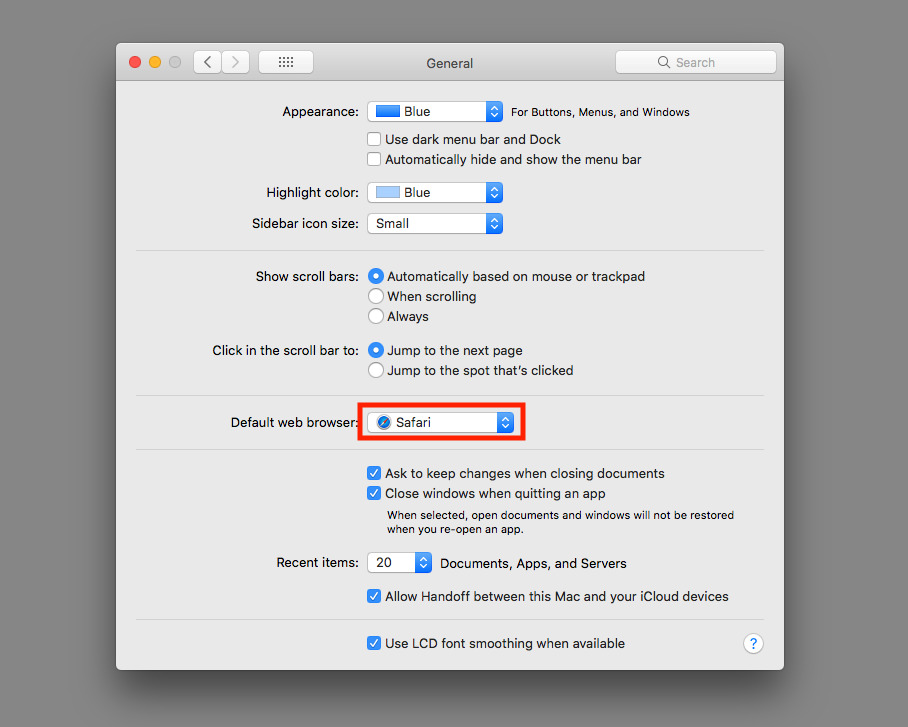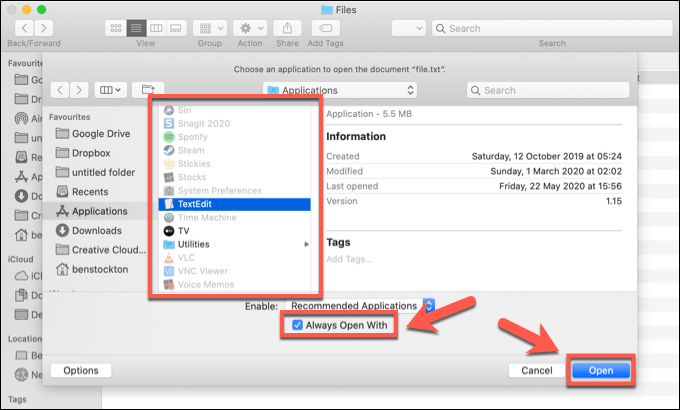

There, you can also associate file types with IntelliJ IDEA to open the selected types of files in the IDE by default. You can find all extensions associated with external applications in the Files opened in associated applications list in Settings/ Preferences | Editor | File Types. The default application is configured in your system systems.
MAC CHANGE DEFAULT PROGRAM FOR OPENING PDF
For example, PDF files are opened in the default PDF viewer. Open matching files in associated application: open the file in the default application. You can change this association later in the settings. Open matching files in IntelliJ IDEA: associate the file with one of the existing file types. Open matching files as text and auto-detect file type by content: open the file without an extension as a text file and identify its type by the content, for example, by the shebang line. In the Register New File Type Association dialog, select the necessary options:įrom the File pattern list, select whether you want to specify a type for the current file ( file.extension) or for all files with this extension ( *.extension). Alternatively, select the file in the Project tool window and go to File | File Properties | Associate with File Type. If the dialog doesn't appear automatically, right-click the necessary file in the Project tool window and select Associate with File Type from the context menu. If IntelliJ IDEA cannot identify the type of the file that you are trying to open or create, it shows you the Register New File Type Association dialog in which you can choose the way you want to process this file. In the dialog that opens, specify the path to the interpreter program and click OK. In the HashBang patterns area, click ( Add HashBang Pattern).

It starts with #! and it's always located on the first line of a script file.įrom the Recognized File Types list, select the file type for which you want to configure a command. A shebang is a combination of characters in a script file followed by a path to the interpreter program that should execute this script. IntelliJ IDEA can recognize file types by the path specified on the shebang line. Configure shebang commands for file types php files are recognized in the IntelliJ IDEA Community Edition and marked with the corresponding icon, although this edition does not provide PHP development support. In IntelliJ IDEA, recognized files are not always supplied with extensive support. To do so, in the Settings/Preferences dialog Ctrl+Alt+S, select Editor | Color Scheme | Custom, and edit the Keyword 1, Keyword 2, Keyword 3, and Keyword 4 properties. The Ignore case checkbox indicates whether the language in files of the custom format is case-sensitive.Įach set of keywords has its own highlighting that you can modify. Keywords of each list will be highlighted differently in the editor and will be auto-completed. In the Keywords section, you can specify up to four lists of keywords. Support paired braces, Support paired brackets, Support paired parens, Support string escapes: select these checkboxes to highlight paired braces, brackets, parentheses, and string escapes. A postfix is a trailing string of characters (for example, e-3, kg). Number postfixes: specify characters that indicate which numeric system or unit is used. Hex prefix: specify characters that indicate that the subsequent value is a hexadecimal number (for example, 0x). Only at line start: characters that indicate the beginning of a line comment are recognized as a comment if they are located in the beginning of a line.īlock comment start, Block comment end: specify characters that indicate the beginning and the end of a block comment. Line comment: specify characters that indicate the beginning of a single-line comment.

In the Syntax Highlighting section, configure case sensitivity, brace matching settings, and specify ways of defining comments: In the Recognized File Types section, click, specify the name of the new type, and provide a description. Press Ctrl+Alt+S to open IDE settings and select Editor | File Types.You can also associate each file type with an extension to help the IDE identify the files of the custom formats. You can configure how the IDE will parse the files by defining highlighting schemes for keywords, comments, numbers, and so on. If you are working with a file type that IntelliJ IDEA does not recognize (for example, if it's a proprietary in-house developed file type) you can also create a custom file type. Such files are parsed and highlighted according to the syntax of the corresponding languages. IntelliJ IDEA recognizes a default set of file types.


 0 kommentar(er)
0 kommentar(er)
